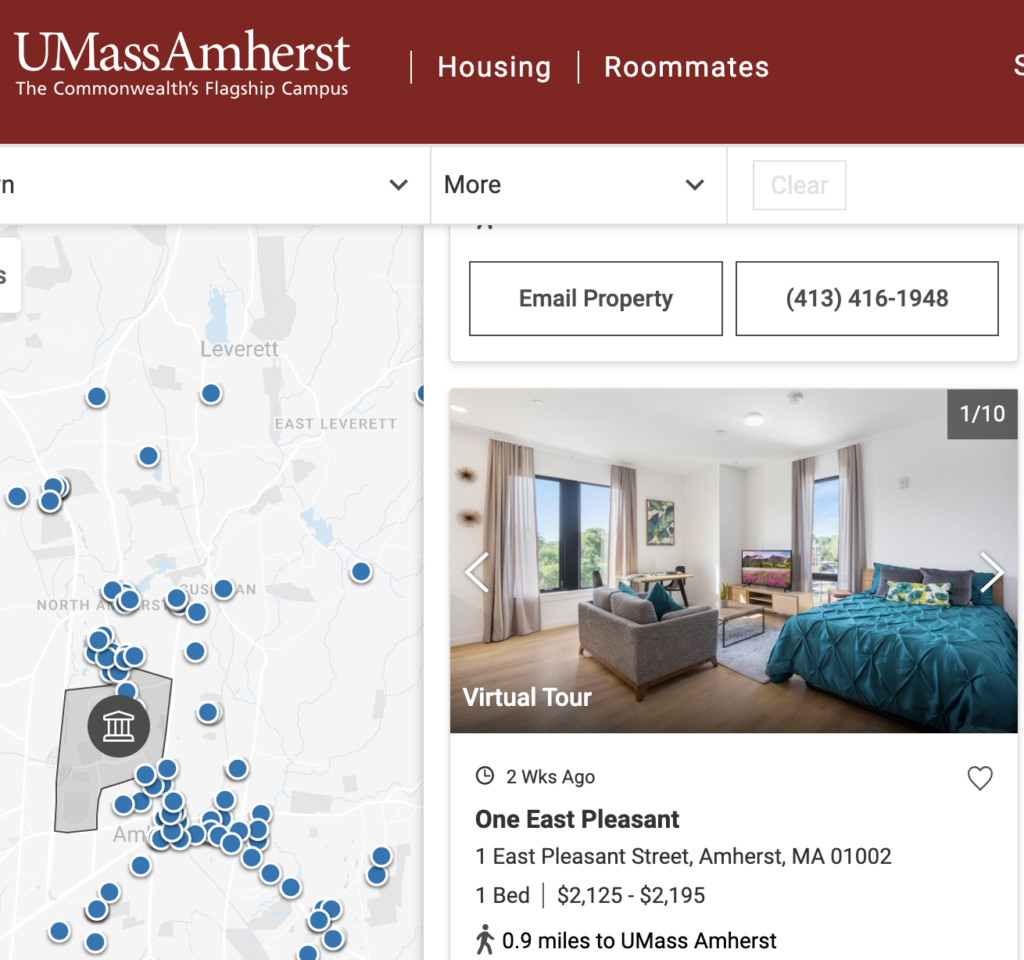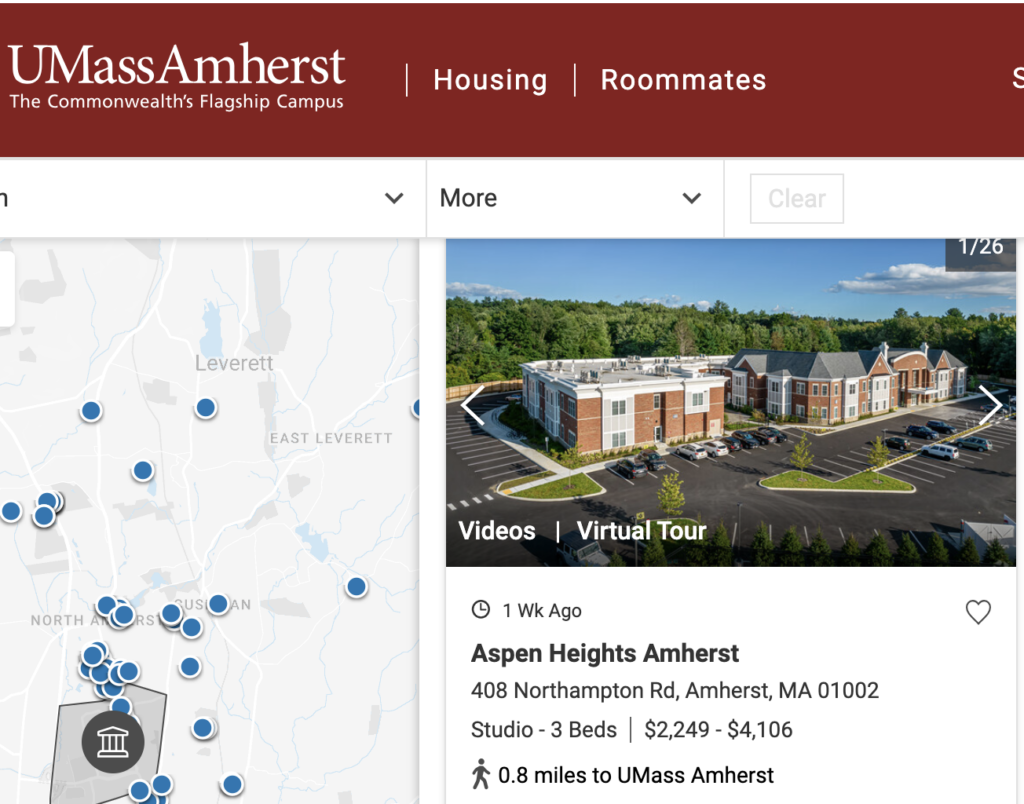Seeking A Five-year Strategic Housing Plan For Amherst

Photo: pixabay.com. Creative Commons
Report On A Community-driven Listening Session, June 20, 2023
[Note: a request was made, and accepted beforehand, for participants (other than organizers) in this listening session to remain anonymous if quoted in the media. One participant asserted that it was not really a public meeting like other public meetings. The Indy is complying with this request, but we note that it goes against our policy to provide full disclosure, which includes naming all speakers and their sources.]
A well-attended, well-run listening session last Tuesday (June 20) asked for participants’ help in the effort to create a strategic five-year plan to meet the town’s housing challenges. Organized by members of the Community Safety and Social Justice Committee (CSSJC), the Amherst Municipal Affordable Housing Trust (including Risha Hess, Aschleigh Jensen, and Erica Piedade;) and the Human Rights Commission including Philip Avila and Liz Haygood; the listening session attracted at least 50 participants, who gathered around several tables to share insights related to three questions. The session was held in-person only at the Bangs Community Center. The guiding questions posed to the public were: What does affordable housing mean to you? How can we improve housing options in Amherst? and, What should we consider in developing potential solutions to housing challenges here?
One clear idea that was commonly held was that for many long-term and would-be residents, Amherst is not affordable. As one participant said, the essential question is, “Where can people who work here, live here? Where can our teachers, our firefighters, our small business people live?” Put another way, “Working people should be able to afford to live where they work.” Or as another participant said, “If we were to live in a two-bedroom unit downtown, the rent would be double the mortgage on our house. We couldn’t afford that. These buildings are exclusively for students who are sharing the rent.” There is no shortage, however, of expensive market-rate housing available, as can be seen by these sample rental listings from June 22, 2023.


A recurring theme related to affordability was that year-round residents have been moving out of Amherst and into nearby towns because of the high cost of living here due to high property taxes, high rents, and high home prices. More than one said, “People I know are moving to local towns where the property taxes are lower. Amherst’s taxes are too high.” Another added a new twist to the phrase “strong towns”, pointing out that “strong towns have strong tax bases — but you can’t have strong tax bases without middle-class families being able to afford home ownership.”
For some participants, the problem is not only about affordability but relationships and families: “I’ve lived here for decades. I’ve raised my children here. And now they have grown up and work here in jobs (and in volunteer work) that contribute a lot to the local community. This is their home and they want to live here, but they can’t afford to — and I’m not even sure I can afford it much longer either. How can we prevent this from happening to families in Amherst like mine?” “I see fewer and fewer families here,” noted a participant.
One participant believes that Amherst’s problems could be partly addressed by encouraging more duplexes and triplexes. But at some tables, the idea of streamlining the permitting process for new duplexes and triplexes, especially if the owners said they planned to live in them as their primary residence, fell flat, with participants citing concerns that homeowners can’t usually get bank loans to build duplexes and triplexes on their properties. But one participant said that owning an owner-occupied rental has worked well for them. “I’ve been in an owner-occupied rental situation for over 50 years and I think it’s the best thing since sliced bread — I’m retired, and I still have an income,” they said, adding that “[it is] enormously a tax advantage.” Conversion of an existing house into multiple living units, they pointed out, is probably the least expensive way to add housing units.
Another attendee emphasized that creating affordability is not just about adding housing units, and there has been talk that the town should consider incentivizing units that have to rent or be sold for below-market prices, or create social housing opportunities for low-income and middle class residents.
Julian Hynes agreed to be fully on the record with an accounting of his table’s discussion. “On the question, ‘What does affordable housing mean?’ we concluded that it means very different things to different people because people have different thresholds of what they themselves can afford.”
A distinction was made between “capital-A affordable” and “actually affordable, or attainable” housing, with participants pointing out that they can’t afford “capital A affordable” units, because the income eligibility for them is narrow and time limited, and the amount of bureaucratic paperwork for renters is daunting.
Regarding what should be considered in developing potential solutions to housing challenges here, a number of participants cited the need for communities of people with diverse incomes who care about each other and “are there for each other in times of need”. “When I lived in the Rolling Green apartment complex for 23 years, I had no problems with students, none at all,” said a participant. “Then I bought a house, and I live on a street that used to be families but now there are students — with more than four living in a house, by the way. And they’re fine, other than the end-of-the-year parties. But I want my grandchildren to have people in the neighborhood who are going to know who they are, recognize them, look after them.” A neighborhood can be like a family, they said, “and that’s something I’m very interested in.”
One participant warmly remembered the first home they owned in Amherst, which was in an intentional community of families with diverse socio-economic, physical, and developmental needs on Pomeroy Lane. This inspired the question: Could the town incentivize that sort of project? For now, it went unanswered.
At one table, conversation was diverted by a participant who was offended by what they termed “name-calling” and “insulting language” when referring to residents who don’t agree with a zoning or construction proposal or who complain about the look and marketing of the self-identified student-style innovative-living residential buildings downtown. “People get put into buckets that are hard to climb out of,” agreed another participant.
“Rent increases are a constant concern here,” said a participant, and the concept of rent control came up as a possible solution at the tables we can report on, with some saying that if people feel they need to make changes in zoning and permitting regulations in order to “just do something” then a cap on rent increases should be considered and promoted at the state level. Proposed legislation supported by Governor Maura Healey would allow municipalities in the Commonwealth to establish rent stabilization or rent control to limit annual rent increases to 10 percent (see also here and here and here). Portland, Maine established rent control two years ago, although the city’s landlord association, now called the Rental Housing Alliance of Southern Maine recently tried, unsuccessfully, to render it meaningless.
Another idea that came up at his table, said Hynes, is to restrict access of outside investors who rent to students in some neighborhoods, which can be done through zoning bylaw changes. “For example, investment firms that are not owner-occupiers within a certain area here would not be able to purchase property in a certain neighborhood or zone,” they said. “We used Orchard Valley as an example — a neighborhood that has been middle class and working class could stay that way.”
Minimum distance requirements between student rentals in residential neighborhoods, boundary limitations for investment firms who want to buy properties within a certain radius of their other holdings, and limiting the number or square footage of investment buildings downtown were discussed as ways to keep rents stable. Participants said that the year after Kendrick Place opened, rents all over town increased by about 30 percent.
Participants noted that Amherst College and UMass could provide more help with meeting the housing challenges in Amherst. Hynes noted that it is difficult to buy and own a home here, but Amherst College owns numerous “starter” homes, valued at less than $400,000, and some of them are empty for long periods of time because faculty are traveling or prefer to buy their own more expensive houses. “Home ownership is very difficult for town employees and for people like my parents, who are both educators, but Amherst College could help solve problems of middle income people and people who are unhoused if they paid even a very small percentage, like less than one percent, of what they would otherwise pay in taxes for their properties.”
Accessory dwelling units, which are allowed throughout most of town but are unpopular with non-investor property owners and tiny homes were also discussed at the session, as were transportation problems related to affordability and density.

And another one bites the dust.
Sold last week:
“TO Trustees Of Amherst College, 17 ORCHARD STREET $380,000”
(single family ranch house)
James Murphy
Where in Amherst is Orchard Valley? I’ve seen it referred to in several contexts, but never with an explanation of what streets comprise it and what area of town it fills.
Jessica Mix Barrington
That’s a great example, thanks James.
Orchard Valley is the area of residential streets between West Pomeroy Lane and West St near Mission Cantina.
(Think Longmeadow Drive, Pondview Drive, Glendale Road, etc)
Orchard STREET is not the same as Orchard VALLEY. Orchard Street is located off of Northampton Road, near the Amherst College playing fields (the ones you can see from space when they are lit up). Orchard Valley is indeed the residential neighborhood down in South Amherst, just south of the unnecessary new roundabout.
And another one…
Sold last week:
“TO Trustees Of Amherst College, 78 NORTHAMPTON ROAD $525,000”
(single family colonial house)
James Murphy